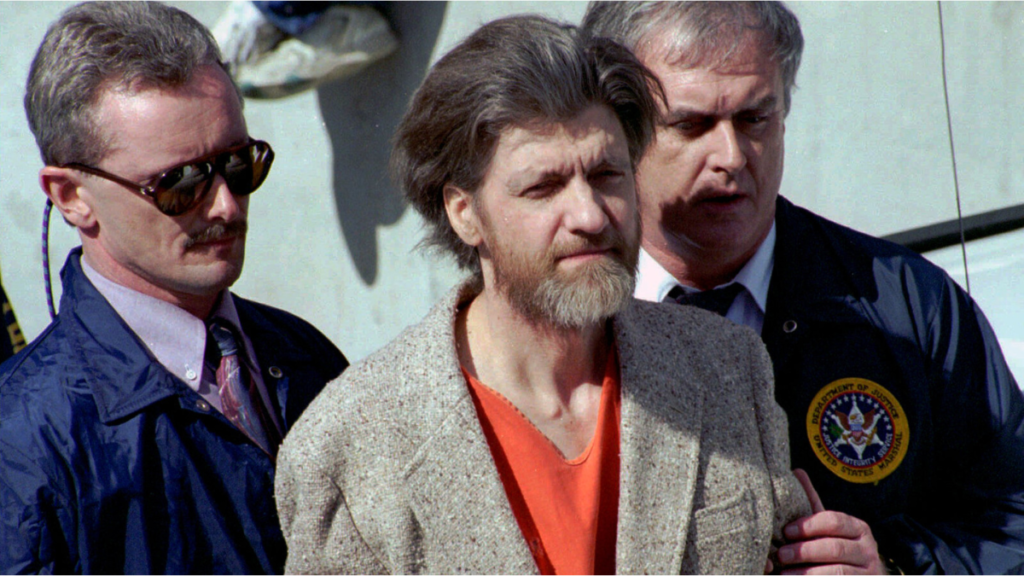Ted Kaczynski, also known as the Unabomber, was a violent American terrorism figure who committed postal bombings in the late 20th century. Born in Chicago in 1942, Kaczynski was placed in a program for the academically talented but struggled with social connections. His dissatisfaction with modern society led him to radicalize and create the Unabomber Manifesto, which condemned progress in science and technology and called for a return to a more traditional way of life.
Kaczynski began bombing people in the fields of modern technology and their associates in 1978, targeting those in positions of authority at universities, airlines, and tech corporations. His actions were later revealed through psychological testing, which classified him as paranoid schizophrenia. Kaczynski is currently incarcerated in a federal supermax prison in Colorado, serving eight consecutive life sentences without parole.
The Unabomber’s case has sparked questions about radicalization and domestic terrorism, as it highlighted the need for early intervention and support for people at risk of radicalization. The case has also sparked debates on the ethical release of his manifesto, the place of technology in society, and the effects on personal privacy.
The Unabomber case serves as a reminder of the need to address the root causes of domestic terrorist activities and the ongoing discussions it creates.
Early Life and Education
On May 22, 1942, Ted Kaczynski entered this world. He was born in Chicago. He was born into a middle class household, but even as a child, his intelligence shone through. Kaczynski was placed in a program for the academically talented by his parents. Despite his intelligence, he had difficulty connecting with others, which aided in his eventual radicalization and isolation.
Academic Brilliance and Dissatisfaction
Kaczynski’s intelligence shone brightly throughout his schooling. He earned his bachelor’s degree from Harvard at age 20 and then a doctorate in mathematics from Michigan. However, it was during his time as a student that his concerns about the course that modern society seemed to be taking took root. This discontentment served as a springboard for his eventual radicalisation.
The Birth of the Unabomber Manifesto
Kaczynski abandoned society in the early 1970s, retiring to a hut in the wilderness of Montana. He shut himself away for a while and came up with the ideas that would become the Unabomber Manifesto during this time. Kaczynski condemned the progress made in science and technology and called for a return to a more traditional, natural way of life in this manifesto.
The Unabomber’s Targets
Kaczynski started bombing people in the fields of modern technology and their associates in 1978. He went after those in positions of authority at universities, airlines, and tech corporations. For nearly two decades, the Unabomber terrorized the world, leaving a legacy of murder and damage in his wake.
Unmasking the Unabomber
The FBI, with the help of several prominent linguists and psychologists, was eventually able to translate the Unabomber’s writings and bring him to justice. When the FBI requested that the Unabomber’s manifesto be published in 1996, both the Washington Post and the New York Times complied. Kaczynski was apprehended after a member of his family recognized his writing style and reported him to the police.
Capture and Trial
In 1996, authorities tracked down and arrested Ted Kaczynski to his isolated cabin in Montana. The subsequent trial gripped the nation as the Unabomber’s background and reasoning for his crimes were exposed. Kaczynski was declared competent to stand trial despite his defense team’s attempts to argue for his mental illness. In 1998, he entered a guilty plea on numerous counts, including those related to the bombings that had claimed the lives of three people.
Psychological Evaluation
Ted Kaczynski was subjected to exhaustive psychological testing after his incarceration. His violent actions were driven by his paranoid beliefs, which were classified by experts as paranoid schizophrenia. The investigation revealed new details about the Unabomber’s complicated mental makeup, but it did not provide a conclusive answer to the question of what motivates someone to perpetrate such atrocities.
Imprisonment and Legacy
Kaczynski is currently incarcerated in a federal supermax prison in Colorado, where he is serving eight consecutive life sentences without the possibility of parole. Criminologists, psychologists, and academics are still fascinated by his case, which has sparked questions about radicalization and the causes of domestic terrorism.
Impact on Society and Security Measures
Not only did the Unabomber’s campaign inspire widespread panic, but it also led to significant changes in how we deal with potential terrorist attacks. As a result of the bombings, mail screening methods were revised, and people became more aware of the threat posed by radicalized individuals acting alone.
Lessons Learned: The Unabomber’s Legacy
Insights into domestic terrorists’ minds and methods can be gleaned from the Unabomber case. It highlights the need for early intervention and support for people at risk of radicalization and the need of understanding the psychological variables that drive individuals to conduct acts of violence.
Unanswered Questions and Ongoing Debates
Despite Ted Kaczynski’s conviction, many doubts remain about the Unabomber case. The ethical release of his manifesto, the place of technology in society, and the effects on personal privacy are all topics that have generated discussion and analysis after his death.
Media Portrayal and Cultural References
Numerous books, documentaries, and even a television series have been dedicated to the Unabomber case. The frequent cultural allusions to Kaczynski and his deeds raise moral concerns about the fine line between entertainment and glorification of violence.
Conclusion
The Unabomber, Ted Kaczynski, depicts a bleak period in American history. His terror campaign prompted widespread soul-searching and new safety protocols. The Unabomber case serves as a reminder of the need of addressing the root causes that can lead to domestic terrorist activities, and the continuous discussions it creates help us gain a better understanding of radicalization and its repercussions.
Read More : rubblemagazine.com







